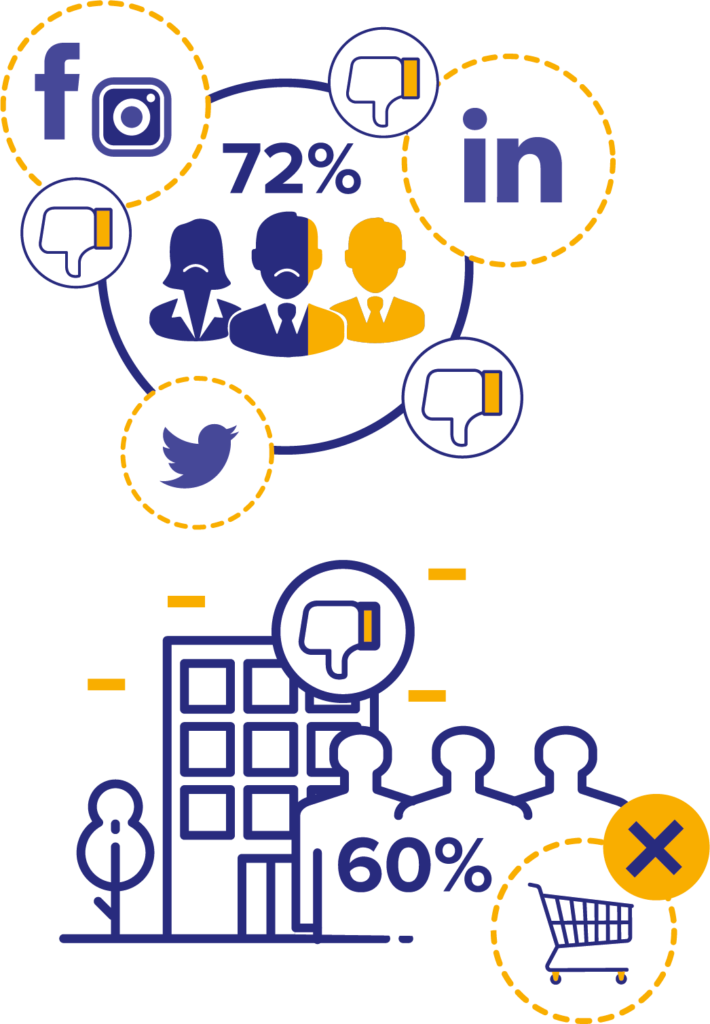What place for HR marketing in companies?

More than salary, today’s candidates are above all looking for relevant and interesting assignments, a good working atmosphere and for some, the prestige of the company.
It is therefore important to know how to attract your future candidates through HR marketing. Initially, this will make them want to apply but above all to become employees of your company. If your recruitment process goes well, they can then become ambassadors for your company. You will then have succeeded in building employee loyalty and a good brand image through them.
What is HR marketing?
HR marketing or human resources marketing is the application of marketing to the field of human resources. That is to say, it consists of promoting your company to your employees or potential candidates. HR marketing has two targets, one internal to the company and one external.
It can also be called employer branding because the two concepts come together. Indeed, the employer brand is the idea, as far as HR marketing is concerned, of the methodology to be followed, through the famous “4Ps”. Here, we adapt them to human resources:
When the target is the candidate:
- The product corresponds to the job offer.
- The price to the salary offered
- Distribution policy to the recruitment process and distribution channels
- And the promotion to the communication made to make known the offer
When the target is the collaborator:
- The product corresponds to the missions entrusted
- Distribution to management
- Payroll and financial benefits
- And the advertising to the communication made on the intranet through the various means of communication
HR marketing therefore has two objectives, that of targeting potential candidates to the point of acquiring them and that of building loyalty among its employees, thus making them more committed.
The strategic importance of HR marketing
In the age of social networks and digitalization, when we are looking for information about a company, our first reflex is to search on Google or social networks. The latter allow us to have images but also opinions, whether customer opinions or those of employees of the same company. 75% of job seekers start their search on Google (Source: CareerBuilder, 2015).
This is why it is very important to know how to manage your brand image, especially your employer brand. This is what will encourage your potential candidates not to remain passive but to apply to you, and also to build loyalty among your current employees. Attracting the best future employees on the job market and recruiting becomes more difficult with the war for talent. You need to establish a real company strategy to stand out and attract the best profiles, especially through your e-reputation. In addition, you will gain notoriety if you offer good working conditions thanks to recommendation marketing, more commonly known as “word of mouth”.
It is important to promote the candidate’s experience: from the phase when someone is interested in your company in order to apply until their last interview. It is important to promote the candidate’s experience: from the phase when someone is interested in your company to the last interview. You should no longer try to destabilize the candidate, but rather to put him or her at ease and be transparent with him or her. They must be able to identify with the company culture and feel they belong because the candidate is also “recruiting” on their own side.
You must also know how to manage refusals because a candidate who has spent a certain amount of time with a company expects a constructive feedback from the company. If he has had one or even several interviews and is turned down without explanation, he will have a negative image of your company and this will have an impact on your employer brand. In addition, he will undoubtedly talk about his experience to those around him. It is therefore important to know how to manage your brand image through the announcement of a rejection and to take the time to explain to the candidate why they were not accepted, and to assure them that they have a good profile but that they simply do not match the company’s current searches. In this way, he will not only keep a good image of the company, but will also be able to try to apply again later.
The different stakes
Social networks have therefore become a must in the field of marketing but also in HR marketing.
Through its employer brand, the company enhances its image and positions itself differently from its competitors. It thus embodies strong values and an attractive culture.
It is a more proactive approach, which aims to seduce the candidate as a customer and to attract him/her rather than to go looking for him/her.
There is also a social and human issue which aims to take into account the needs and expectations of the employees within the company through a good quality of life at work and a good social climate. This encourages them to get involved in the company because the working environment is pleasant and therefore to stay there longer. This helps to retain your talents within the company. All of this thanks to the fact that everyone is considered as much more than just human capital. They will then be able to develop a sense of belonging and you will have less risk of absenteeism as well as their loyalty.
The employer brand is increasingly influencing the general image of the company:
- 72% of candidates who have had a bad experience with a company will talk about it on social networks according to a study by Glassdoor
- 60% of consumers who have heard about a bad employer brand are less likely to make a purchase according to a study by CareerBuilder.


The role of HR marketing is to define a target relationship and then to accompany the construction of this relationship.
We talk about inbound recruiting. The goal is to let the candidates come to you. Your content marketing must be built as such:
- Having a Careers space on the website that allows you to highlight your corporate culture and also to facilitate the application process.
- Create a business blog with SEO-optimized content and your career site will become the platform for your online voice.
- Speaking in the media, organizing business conferences, participating in events…
Our advice
-
Facilitate the application itself through an intuitive interface
Do not hesitate to call upon a web designer to improve the user experience.
-
Post your ads on targeted recruitment sites
-
Deepen your relationship with the candidate by personalizing it and don't hesitate to immerse him/her in your corporate culture.
Make your brand attractive
-
Don't hesitate to use collaborative recruitment, by involving different employees in your company.
-
Take care of the experience of the candidates that you refuse because their profile may well correspond to another position within your company.
Doing this, take the time to give them personalized feedback on their application and thus develop your employer brand image.
-
In order to retain your employees, first take care of their integration period.
60% of new recruits who have benefited from a structured integration stay with the company for the next 3 years.
-
Promote internal mobility
Our communication agency Habefast accompanies you in the development of your HR marketing strategy.
You will have understood that HR marketing is much more than the management of a company’s human resources and requires the use of marketing tools to attract talent. Indeed, it has an impact on a company’s entire brand image. This is what encourages candidates to apply, employees to stay, but also consumers to buy the products associated with this brand.
HR marketing must therefore have a fundamental place in your employer image communication strategy and must not be neglected.
Its success can be summed up in one simple rule: keep the promises you make to your candidates and promote well-being at work.
